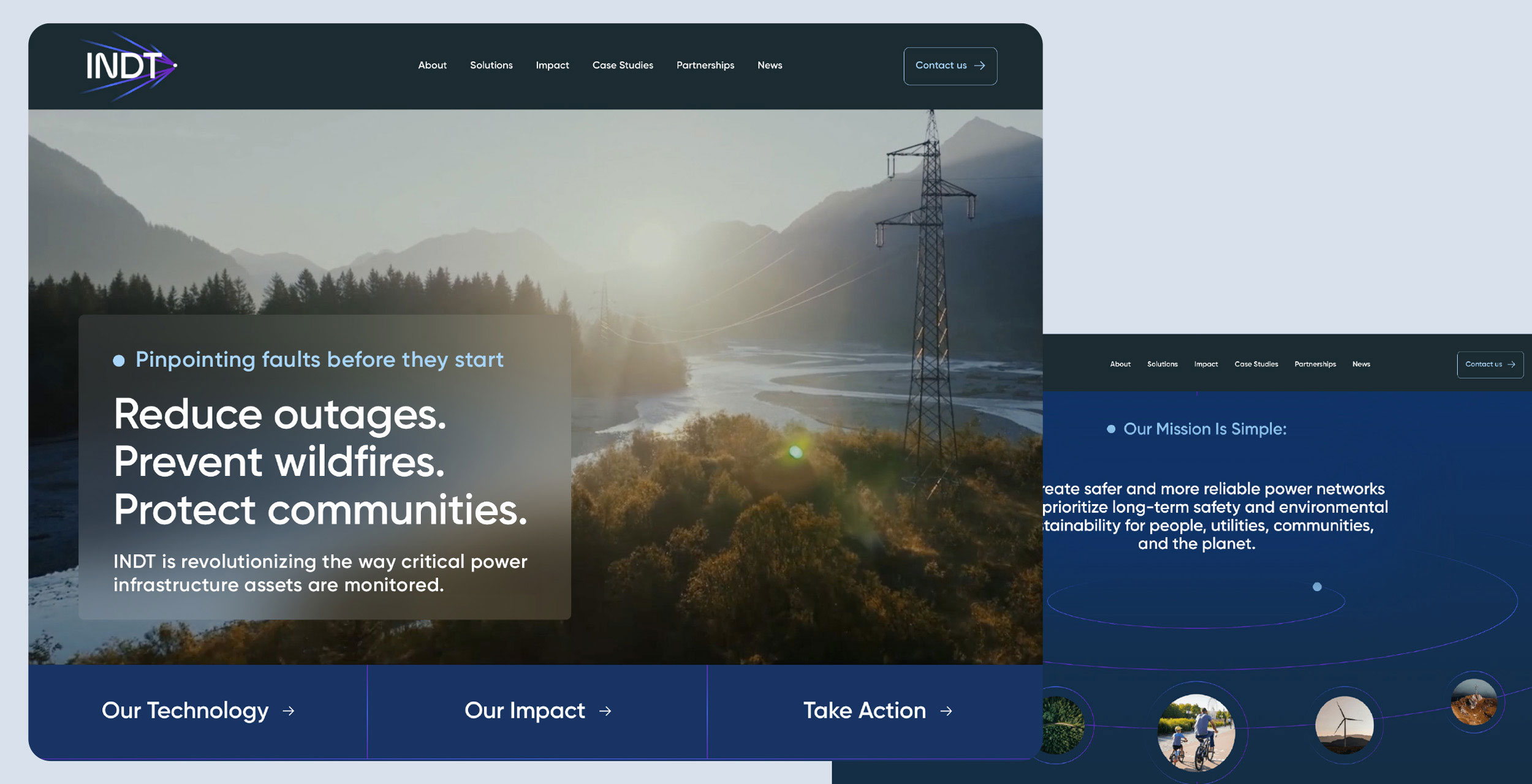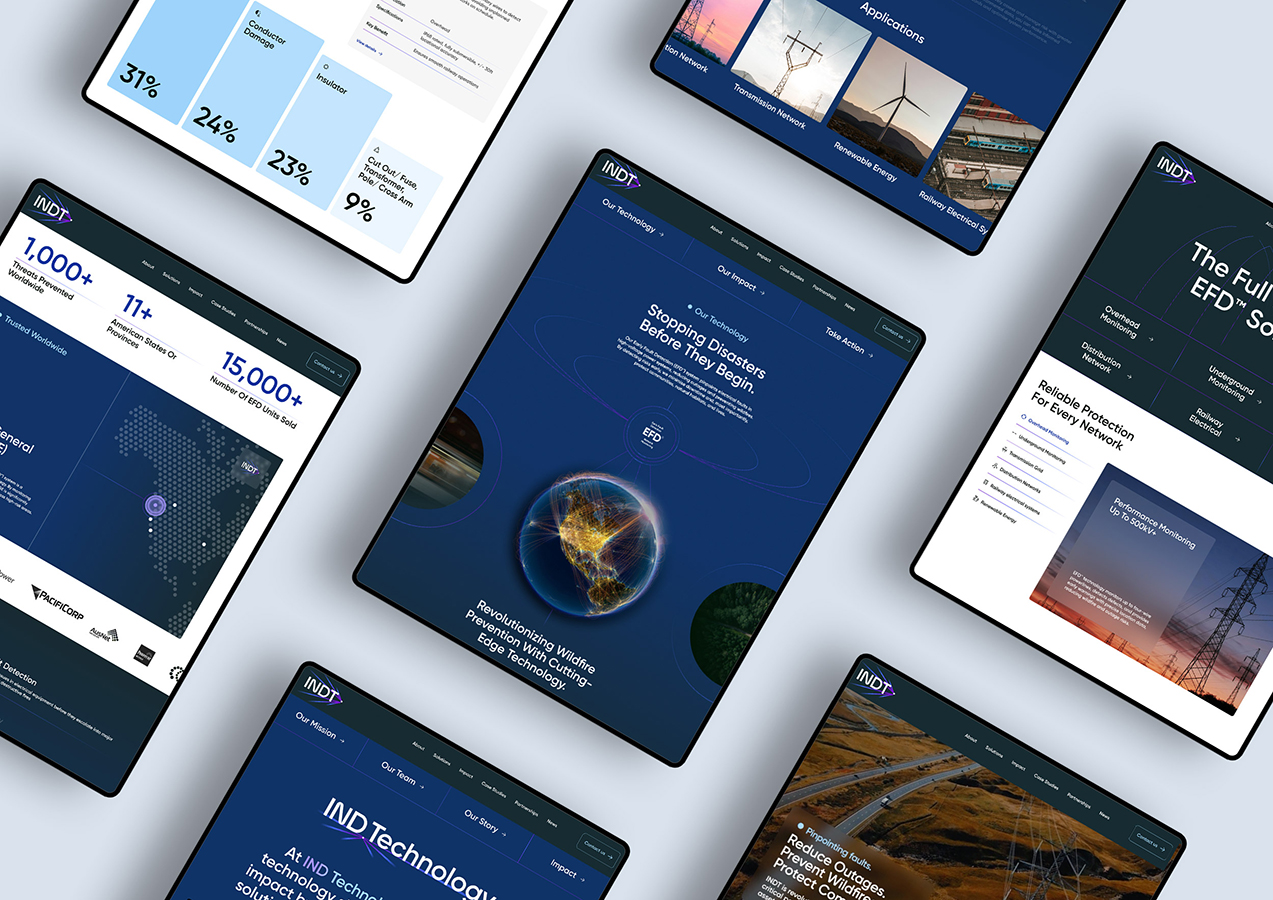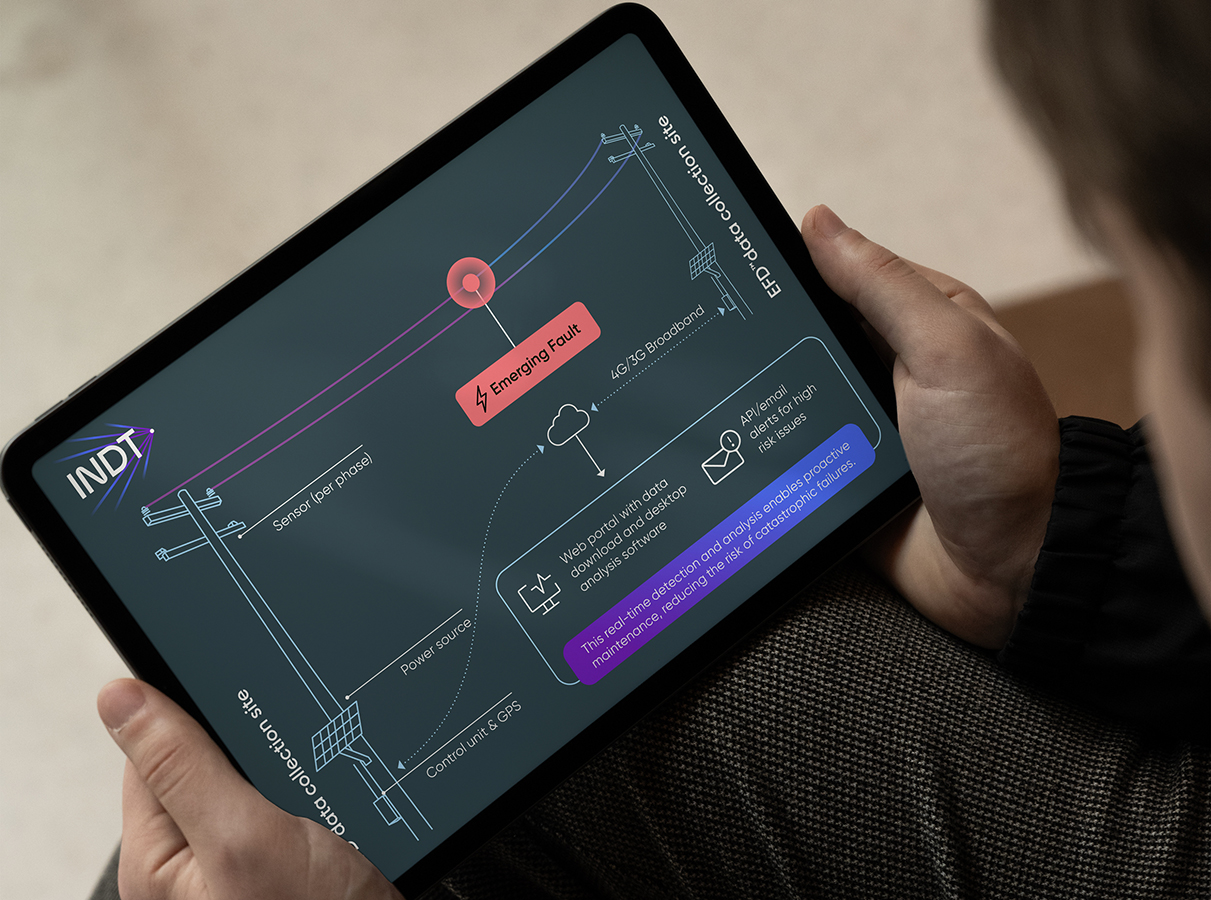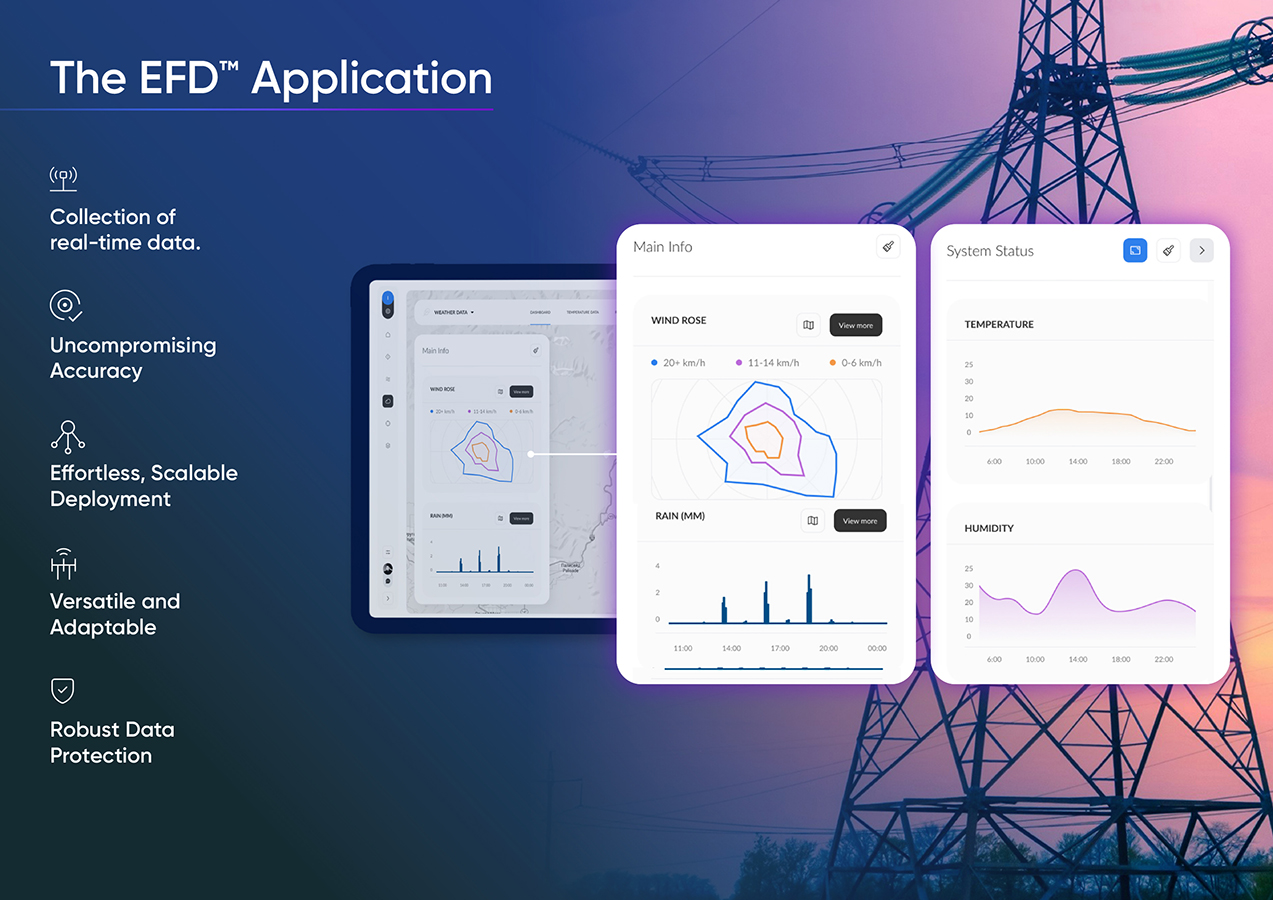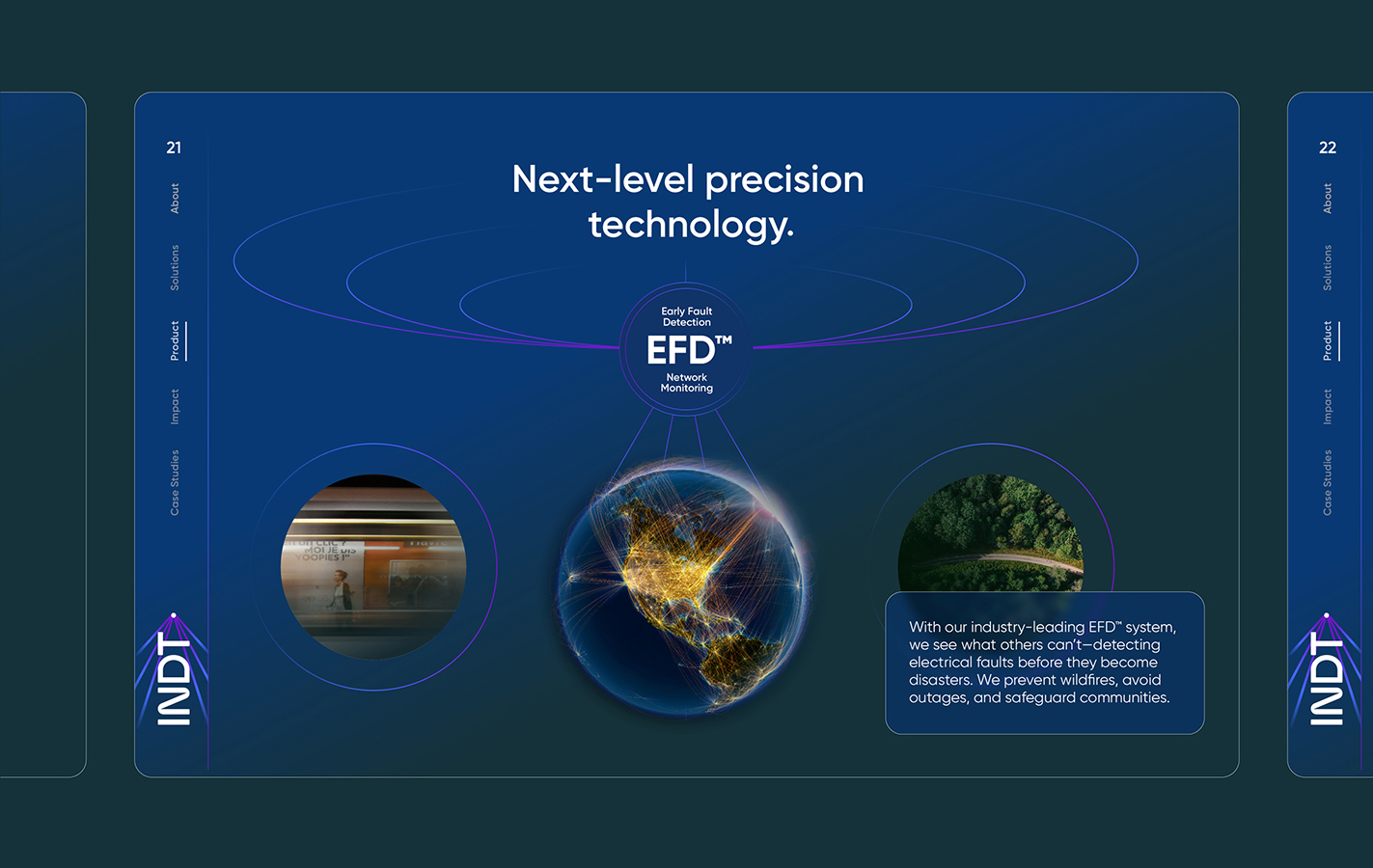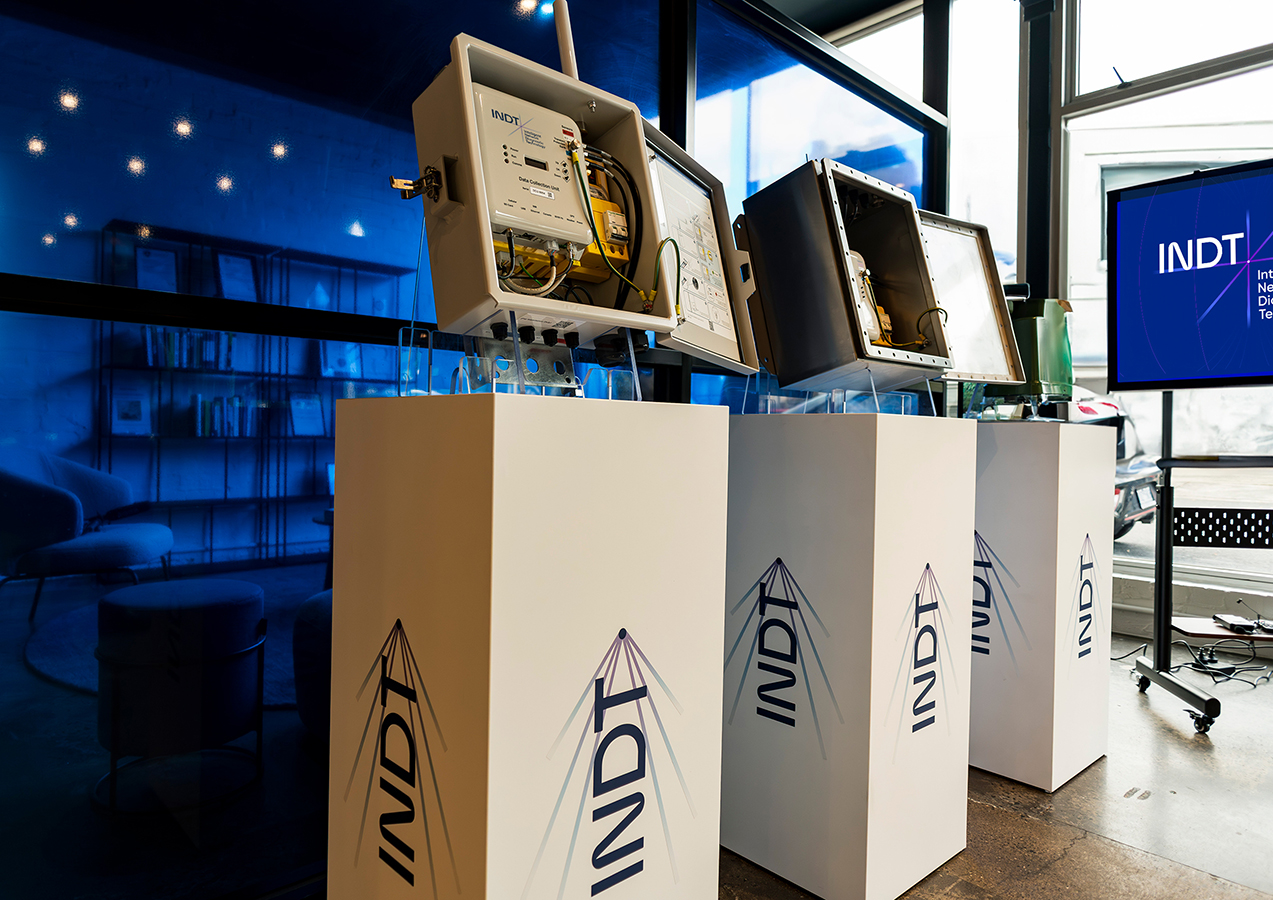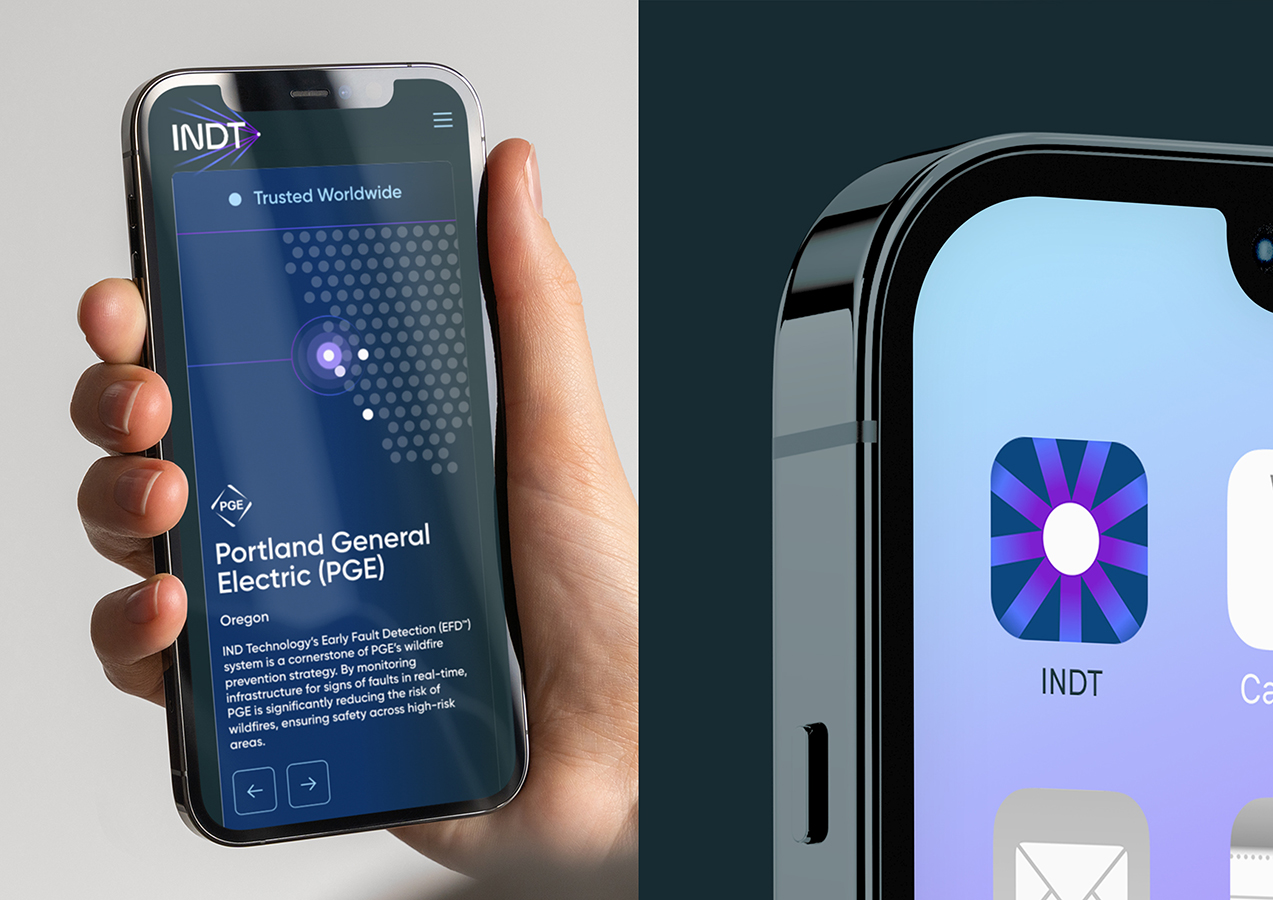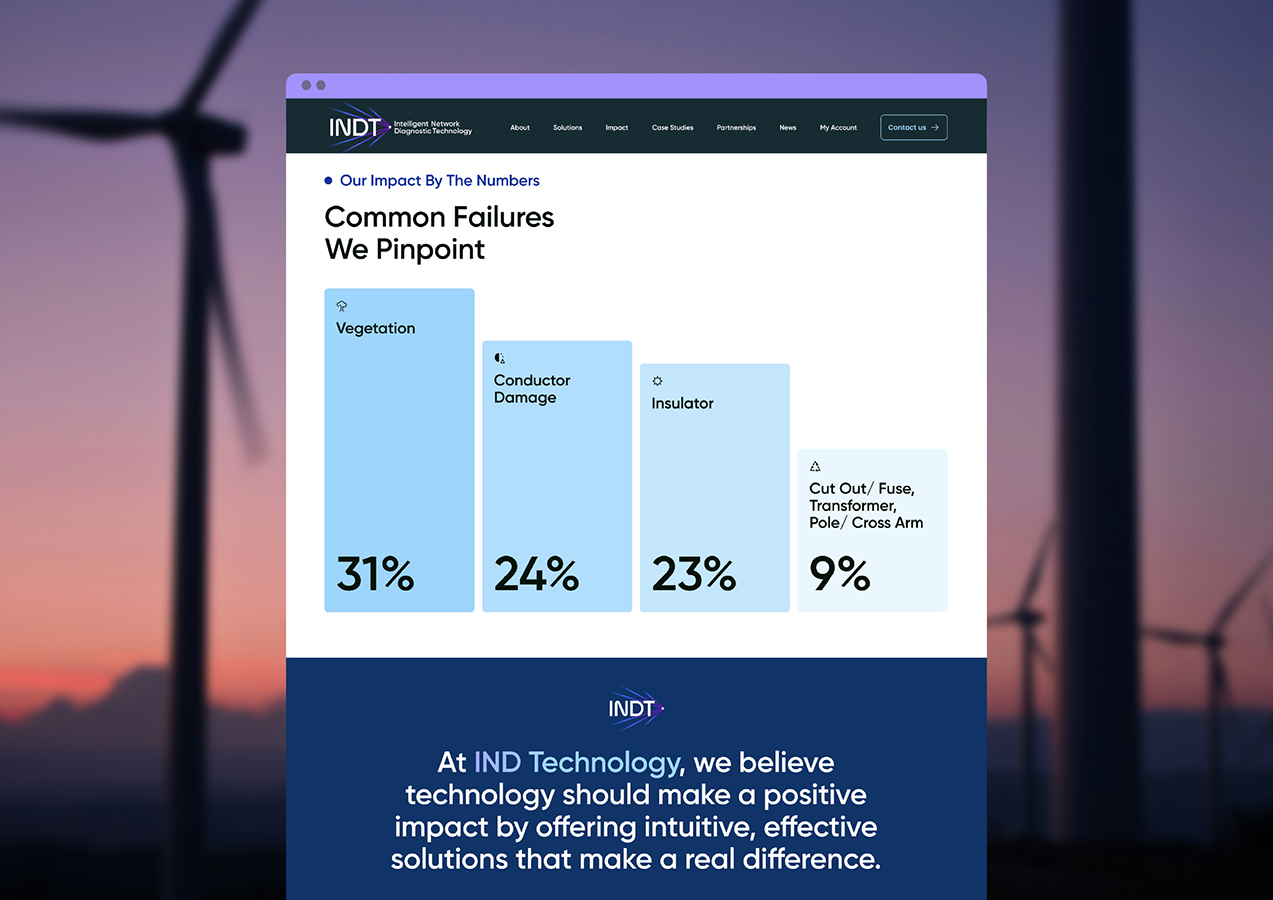Grounded in a rigorous design thinking approach, the project began with deep user insight and stakeholder alignment. We used co-design workshops, industry interviews, and global competitor benchmarking to inform our strategy, ensuring the platform would resonate across key audience groups: utility providers, policymakers, engineers, and the general public.
The user experience was shaped using the Honeycomb UX Framework, ensuring the site was:
- Useful – showcasing how EFD™ actively prevents disaster.
- Usable – translating complex data into visual, intuitive storytelling.
- Desirable – designed to inspire action, not just inform.
- Credible – grounded in technical accuracy and real-world outcomes.
- Accessible – WCAG-compliant for global equity and inclusion.
The site architecture was restructured to guide diverse users through a tailored, educational journey. Interactive maps, real-time data, and micro-animations helped bring the EFD™ system to life. Every visual and content decision was made to humanise the technology and connect its impact to the real world—making safety, resilience, and climate action feel both urgent and achievable. The result is a fully responsive, scalable website that not only meets the brief; it reframes how critical infrastructure innovation is communicated on a global stage.

